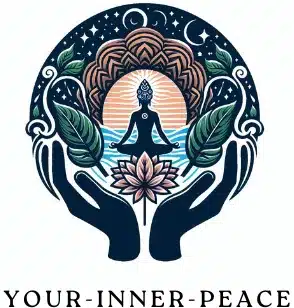
If you’ve ever spent a night staring at the ceiling or tossing around struggling to fall asleep, you’re definitely not alone. I’ve been there, counting the hours and feeling more awake with each glance at the clock. Guided meditation for sleep is something that completely changed my night time routine. It’s not magic, but it sure feels close on those restless nights. Here, I’m breaking down everything you need to know about guided sleep meditation so you can drift off quickly and wake up feeling refreshed, not groggy.
What Is Guided Meditation for Sleep?
Guided meditation for sleep is a spoken or audio-led practice where a voice, often paired with calming music or nature sounds, walks you through steps that settle your mind and body. The goal is to help you let go of your day’s stress and signal your mind to relax enough to naturally fall asleep. This kind of meditation can include things like focused breathing, visualization, gentle body scans, or progressive muscle relaxation—all designed to slow you down and help your brain switch into “rest mode.”
I find it pretty effective because, just like when you get instructions for exercise, it’s easier to follow along when someone walks you through each step. Your mind wanders way less, and you can relax without wondering if you’re doing things right.
Why Guided Meditation Helps You Sleep Better
Sleep problems are so common, and a lot of them come down to an overactive mind—stress over work, family, or even just scrolling social media late at night. Guided meditation helps change the mental channel. When I listen to a guided meditation, my brain actually gets a break from those looping thoughts. That quieting effect is super important for anyone who finds their mind racing at bedtime.
The practice works by:
- Calming the Nervous System: Deep breathing and gentle focus help lower heart rate and promote relaxation. This makes it easier to fall asleep.
- Easing Physical Tension: When your body feels tense, sleep is almost impossible. Guided body scans or muscle relaxation help you unwind physically as well as mentally.
- Distracting From Restlessness: Instead of focusing on the anxiety about not sleeping, the meditation voice gives you something to follow, making it easier to let go of worries.
Doctors and sleep specialists recommend these techniques for good reason—they’re safe, can be done anywhere, and don’t require medication. Over time, practicing guided meditation before bed can even retrain your mind to wind down more quickly and consistently, giving you deep rest on a regular basis.
Plenty of studies have shown that people who add guided meditations to their nightly routines experience reduced insomnia symptoms, fall asleep faster, and wake up less during the night. Even folks new to meditation can benefit without feeling overwhelmed. Guided meditations are made for you to follow along without pressure, and even on your busiest days, just ten minutes can make a noticeable difference.
How to Get Started With Guided Meditation for Sleep
If you’ve never tried meditation before, sleep meditations are a gentle entry point. Here’s what I recommend to get going:
- Pick Your Guided Meditation: There are tons of free audio sessions online and in apps. Choose one aimed specifically at sleep, not just general relaxation.
- Find a Comfortable Spot: Set up your bed or a lounge area with pillows, comfy blankets, dim lights, and have your phone or speaker nearby.
- Limit Distractions: Put your phone on “do not disturb,” dim the lights, and try to keep background noise to a minimum. You want the space to feel peaceful and safe.
- Press Play and Follow Along: Just listen and let the instructor guide you step-by-step. No need to “try hard”—the more you allow yourself to follow passively, the easier it gets.
You don’t need hours—a 10-minute guided meditation is often enough. There’s no right or wrong way to do this, so experiment with different voices and styles until you find one that feels natural. Consider trying a few until you stumble upon one that helps you truly relax. If you prefer a certain kind of background sound, such as rain or ocean waves, search for meditations that combine these elements for a soothing experience.
Common Challenges (And Simple Solutions)
Just like learning anything new, guided meditation for sleep might come with a few bumps in the road at first. Here are some common hiccups I’ve run into and how to work through them:
- Racing Thoughts: Some nights, it’s tough to quiet the mind. I focus on the guide’s voice and bring my attention back gently whenever I notice my mind wandering. It helps to remind yourself that wandering thoughts are totally normal and not a sign of failure.
- Physical Restlessness: If I’m feeling fidgety, I’ll do a quick stretch or a couple yoga poses first. Even simple deep breathing helps. A warm shower or bath before bed can also signal your body that it’s time to slow down.
- Tech Issues: Alarms or unexpected notifications can totally ruin the mood. Switching my phone to airplane mode or using a meditation device makes a big difference.
The more consistent you are with the practice, the easier it becomes to switch into sleep mode. Over time, even those tough nights start feeling a lot more manageable. You may also notice that other parts of your day begin to benefit, as improved sleep leads to better focus and mood.
Top Guided Sleep Meditation Techniques
Everyone’s brain works a little differently, and what knocks you out might not do much for the next person. Here are some of the most popular techniques worth checking out, based on feedback from other meditators and my own experience:
- Body Scan: The guide walks you through focusing on each part of your body in turn, relaxing everything from your toes upward. This encourages tension to melt away and draws your focus away from mental chatter.
- Breath-Focused Meditations: These keep your attention on slow, deep breathing. With every exhale, you let go of the day’s stress. If you catch your mind wandering, simply direct your focus back to your breath.
- Visualizations: The instructor might lead you on an imaginary adventure, like walking through a peaceful forest or floating on a cloud. These often work for people whose minds love stories, images, and vibrant imagination.
- Progressive Muscle Relaxation: You tense and release different muscle groups to help let go of any buildup from the day. This allows your body to settle fully into bed and can be especially helpful if anxiety shows up as physical tension.
Try each technique for a few nights and see which one helps you sleep the most soundly. Some people mix it up depending on their mood or how stressful their day was. If you have trouble with one approach, don’t get discouraged—just move on and try another. Your perfect sleep meditation rhythm might take a bit of discovery.
Creating the Perfect Sleep Meditation Environment
Setting up the right atmosphere signals your mind and body that the day is wrapping up and sleep is next. I think of it as winding down with purpose instead of just crashing into bed. Try these tweaks to make your space more relaxing:
- Lighting: Dim lamps or soft string lights tell your body it’s nearly bedtime.
- Soundscapes: White noise, ocean waves, gentle rain, or soft music with no words supports deeper relaxation. Many guided meditations include these background sounds, but you can also find your own favorites to play quietly.
- Aromatherapy: Scents like lavender, chamomile, or sandalwood are calming. Essential oils or a pillow spray can give your senses a soothing anchor—just be sure to use these safely.
If you want to go even further, there are dedicated sleep retreats where experts walk you through customized routines and relaxation techniques. Even small adjustments in your bedroom (like blackout curtains or a comfortable mattress topper) can greatly boost your sleep quality.
Affiliate Spotlight: Serene Sleep Recovery Retreat in Oradea, Romania
For those serious about reclaiming restful nights, booking a sleep-focused retreat can be super helpful. I came across the Serene Sleep Recovery Retreat in Oradea, Romania (Agenda Lifestyle Wellness), and it’s worth a look if you want a full reset.
This retreat takes place at Hotel Nevis, about 10 minutes from the center of Oradea, a city known for its Art Nouveau vibes. Stay in a 4-star double room, enjoy delicious half-board meals (they’ll customize menus for dietary needs), and relax on the rooftop with views from the jacuzzi and lounge. There’s plenty packed in for your recovery:
- 5 nights’ accommodation and half-board meals
- Personal sleep kit (mask, earplugs, pillow choice, sleep roll-on)
- Medical consultation to build a custom sleep plan
- Daily body and mind treatments like NESA, PEMF, pressotherapy, and relaxing massages
- Unlimited access to the spa (heated pool, sauna, steam bath, rooftop jacuzzi)
- Daily sleep-friendly treats (herbal teas, antioxidant waters, digestive bitters)
- Sunset Rooftop Experience with a cheese and fruit platter
Ahead of your stay, the team sends you a health questionnaire to make sure your experience is tailored just for you. If you’re feeling stuck with your sleep and want expert guidance, this kind of all-in-one retreat is a great way to reset and enjoy some pampering. Here’s the link for more details: Serene Sleep Recovery Retreat.
Frequently Asked Questions About Guided Sleep Meditation
People often ask the same things when starting with sleep meditations, so I’ve put together the questions I get most:
Q: Do I need experience with meditation to use guided sleep meditations?
A: Not at all! These meditations are made to be easy to follow, even if you’ve never meditated before. The guide walks you through every step, and you just need to listen.
Q: How long should I stick with a session before expecting results?
A: While you might notice better sleep after the first try, regular practice brings the best results. Give it a week or two to really see the benefits. Consistency is key.
Q: Can I use guided meditation alongside other sleep aids?
A: Yes! Many people use them with white noise, calming scents, or after winding down with a warm bath. Just stay away from anything overstimulating (like screens with blue light) right before bed to avoid interrupting your relaxation.
Sleep Deeper, Wake Happier: Making Meditation a Nightly Habit
Adding guided meditation to your bedtime routine is one of the simplest changes that can make a big difference in sleep quality. The best part is there’s no pressure to “do it right”—the more relaxed you feel about it, the sooner it starts working for you. Try a few different styles, tweak your environment a little, and give yourself time to get used to this new habit. A better night’s sleep truly is within reach!
If you want a real jumpstart and a little travel adventure, consider checking out a sleep-focused retreat like the one in Oradea. No matter how you get started, making meditation part of your evening sets you up for a calmer mind, better rest, and more energized mornings. Here’s to smoother nights ahead!
Here’s a little transparency: Our website contains affiliate links. This means if you click and make a purchase, we may receive a small commission. Don’t worry, there’s no extra cost to you. It’s a simple way you can support our mission to bring you quality content.
